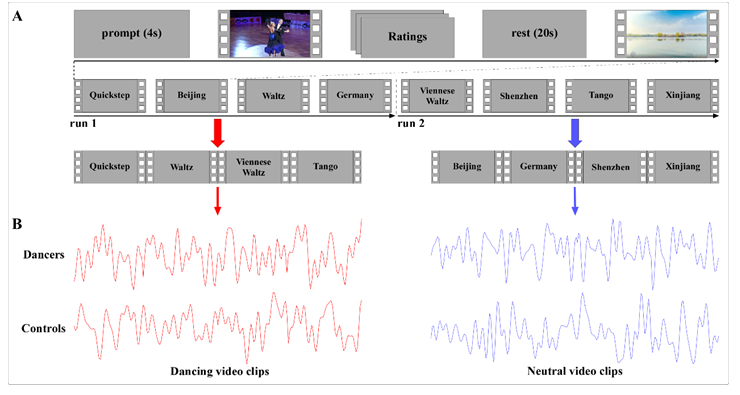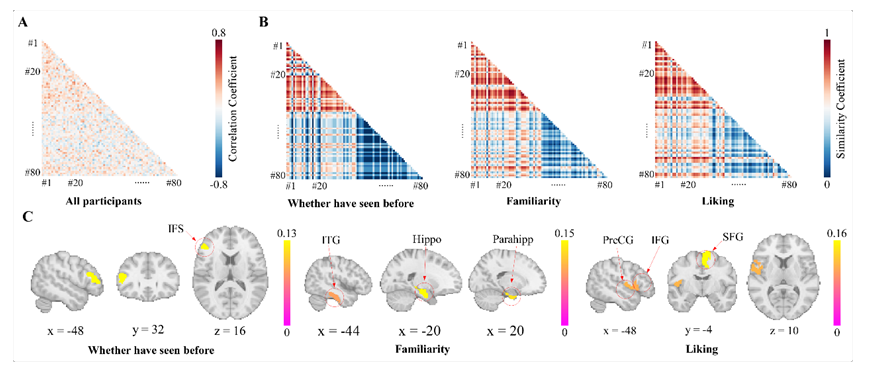Ballroom dance is an art form of body-to-body communication. Professional dancers may share feelings and thoughts on dance, especially with their partners. To measure the neural similarity of dancers, a novel statistical approach named intersubject correlation (ISC) could be used. In addition, intersubject representational analysis (ISRSA), which is an extension of ISC, would be helpful to examine the correlation between neural similarity and behavioral similarity.
Led by Dr. HU Li and Dr. KONG Yazhuo from the Institute of Psychology, Chinese Academy of Sciences, the research team found brain mechanism evidence that neural similarity would be promoted by long-term ballroom dance training.
In this exploratory study, 41 professional ballroom dancers and 39 age- and sex-matched controls were recruited from Beijing Sport University. During the experiment, dancers’ training information was collected. High-resolution functional magnetic resonance images (MRI), as well as structural MRI images, were also collected. Participants viewed four dancing videos and four natural videos in the same order (Figure 1). Ratings on the video (whether seen before, familiarity, and liking) were also collected after every video.
Results showed ISC was higher for dancers watching dancing videos than controls and natural videos. Enhanced neural synchrony was mainly observed in the inferior frontal gyrus, precentral and postcentral gyrus, and inferior parietal lobule (Figure 2). Correlations between ISC values and dancer information were found, e.g., cooperation years between partners positively correlated with their ISC in the left globus pallidus. Furthermore, ISRSA showed a significant correlation between impression on the video and ISC, e.g., familiarity similarity positively correlated with ISC in the hippocampus and parahippocampus (Figure 3).
This study discovered the close relationship between long-term ballroom dance and neural similarity and explored its underlying brain mechanisms. The neural similarity may provide a neural indicator to define an optimal cooperative partner in the future.
This work entitled “The association between ballroom dance training and empathic concern: behavioral and brain evidence” was published in the Neuroimage on Aug 1 2023, and funded by Beijing Natural Science Foundation and the National Natural Science Foundation of China.

Figure 1. Experimental design and examples of BOLD timecourse signals. Image by Dr. HU Li.

Figure 2. Brain regions showed higher ISC for dancers watching dancing videos than other conditions . Image by Dr. HU Li.

Figure 3. Brain regions correlated with impressions on dancing videos. Image by Dr. HU Li.
LIU Chen
Institute of Psychology Chinese Academy of Sciences
Beijing 100101, China.
E-mail: liuc@psych.ac.cn
